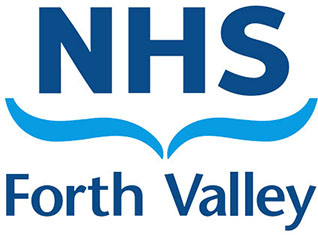Alongside diet and lifestyle changes you may require support from medications, the information included in this section of the website is to help you make an informed decision on what medications maybe right to help support you.
Metformin
Can be used to treat T2DM, Gestational diabetes and PCOS. It is a drug which helps to increase the effectiveness of the insulin you produce and reduce the amount of glucose your liver produces.
It should be taken twice per day, and gradually increased once per week to reduce the likelihood of developing gastric side effects. You should commence the smallest dose of 500mg in the evening and this should be taken directly after your main meal.
We can increase how quickly it is increased depending on your glucose levels. It has a cumulative effect on your glucose levels.
Sulphonylureas – Drugs whose name ends in ‘ide’
Sulphonylureas work by increasing the amount of insulin the pancreas produces. They can last in your system for up to 16 hours and have an instant effect on lowering your blood glucose.
These medications can cause hypoglycaemia (low blood glucose) as they work by producing extra insulin.
your GP or Practice Nurse will ask you to test your blood glucose if you take 80mg or over of gliclazide.
SGLT2 – Drugs who’s name end in ‘gliflozin’
These are a class of drugs which are not only used to treat diabetes, but also can be prescribed to protect your heart or kidneys.
They work by stopping the kidneys from absorbing glucose and increase the frequency of urinating. They have an instant effect on your glucose levels and other medication may need to be adjusted to help keep your glucose levels in target. They also are associated with some weight loss.
GLP 1 – Drugs who’s name ends in ‘tide’
GLP-1 medications have been in the news a lot recently, in Forth Valley we have oral and injectable forms of GLP-1 available. GLP-1 agonists are medicines used to treat type 2 diabetes. They mimic (copy) the action of a hormone (chemical substance) called GLP-1. Your intestine naturally releases this hormone when you eat food.
The medicines work in different ways. They:
- Help your body to make more insulin (the hormone that controls the amount of sugar in your blood) when needed.
- Reduce the amount of sugar (glucose) that your liver makes.
- Slow down the digestion of food, so that it takes longer for your body to absorb (take in) the sugar from meals and makes you feel full.
- Can reduce your appetite and reduce ‘food noise’.
ORAL GLP-1 = Rybelsus
For most adults with type 2 diabetes we recommend this treatment as a 3rd line option for people who will benefit from improved blood glucose control.
When you take Rybelsus there is some guidance you must follow to allow the drug to work properly, reduce the likelihood of it interacting with other medication and reduce any symptoms you may have.
The guidance is you take a tablet 1 time each day when you wake up on an empty stomach. You swallow the tablet with a sip of water (no more than half a glass or 120ml). Please wait for at least 30 minutes before eating, drinking or taking any other tablets.
INJECTABLE GLP-1(+GIP) = Mounjaro
In Forth Valley we consider Mounjaro as an option if Rybelsus has not been effective or has caused significant side effects. Mounjaro is very effective to help improve blood glucose control and reduce excess weight. It is given as a once weekly injection, therefore education is needed to learn how to do this. The hospital diabetes team deliver the education and early follow-up for Mounjaro so your primary care team will need to refer you for this if meeting referral criteria.
We do not prescribe Mounjaro for weight loss alone as part of the diabetes service, a service for this is being developed in Forth Valley.
Thiazolidinediones – Drugs who’s name end in ‘zone’
These are a group of diabetes drugs which work by reducing insulin resistance and improving insulin sensitivity.
They work on the fat cells, particularly in the liver and pancreas and are helpful if you have also been diagnosed with NAFLD (fatty liver). They are not as effects as other medications in controlling blood glucose and we are now using these drugs less, however they may still be the correct medication for you.
DPP4 inhibitors – Drugs who’s name ends in ‘gliptin’
These are a group of drugs work by blocking the action of DPP-4, an enzyme which destroys incretin.
Incretin is a naturally occurring hormone that helps the body produce more insulin only when it is needed and reduces the amount of glucose being produced by the liver when it is not needed.
These hormones are released throughout the day and levels are increased at meal times. These again are not as effective in controlling glucose levels as some other drugs, but they are safe to give to people who have renal failure.
Green Prescribing in Diabetes
The NHS is the largest public sector contributor to the UK’s carbon footprint, and 25% of all emissions directly or indirectly caused by the NHS are associated with medicines. This information outlines more environmentally sustainable options for insulin-treated diabetes. Around 60 tons of plastic are produced annually due to insulin pens, most of which is incinerated.
The information sheet below has been produced to support switching to reusable insulin delivery devices which reduce the amount of waste produced from diabetes management.

